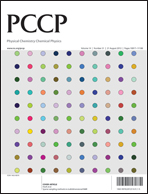Exposure of highly-energetic facets challenges one's capabilities of designing new substances at the atomic level and of exploiting novel physicochemical properties. We report herein on TiO2 microspheres with a maximum exposure of the highly-energetic facet (001). Intriguingly, these microspheres were fabricated by bundles of adjacent nanowires that grow roughly parallel along the c-axis from sphere centres to outward surfaces. In between these nanowires, there existed nanoscale boundary cavities. Reducing the nanowire diameter led to a lattice expansion, and meanwhile nanoscale boundary cavities in between nanowires were tailored to possess an optimum charge storage at a nanowire diameter of 6.2 nm. This charge storage could suppress the combination of photo-generated holes and electrons. Furthermore, owing to the lattice expansion, photo-generated holes were promoted to transfer along the c-axial to the highly-energetic facet (001) to produce reactive hydroxyl radicals. As a consequence, under UV-light irradiation, microspheres with a nanowire diameter of 6.2 nm showed a maximum photocatalytic activity among all nanowire diameters. When the microspheres were broken into segments, the catalytic activities were further enhanced and even superior to commercial P25, because of sufficient utilization of incident light. The methodology reported in this work is fundamentally important, and may offer opportunities for exploring highly-energetic facets of micro-architectures that interplay with spatial charge storage to active novel surface activities, potentially useful in various catalytic applications.

You have access to this article
 Please wait while we load your content...
Something went wrong. Try again?
Please wait while we load your content...
Something went wrong. Try again?


 Please wait while we load your content...
Please wait while we load your content...